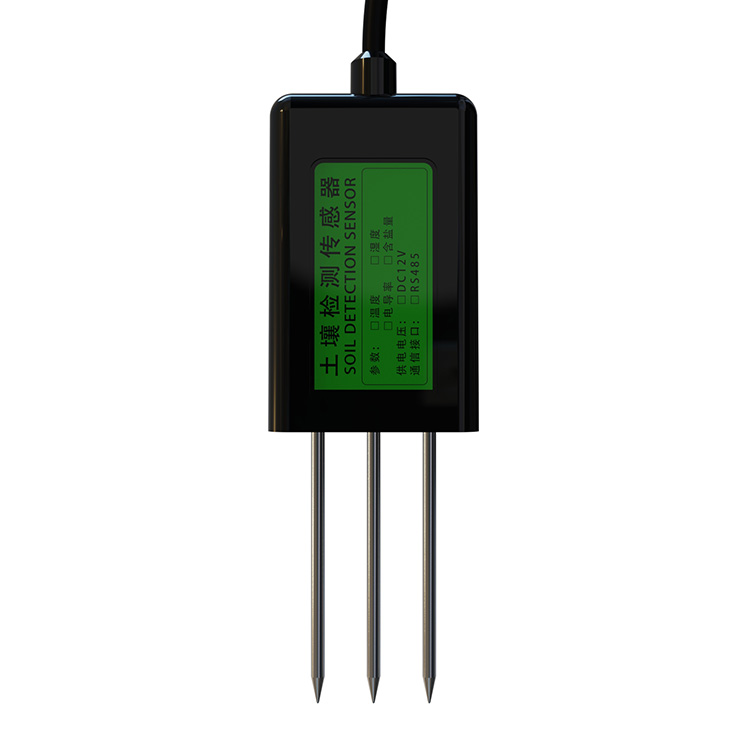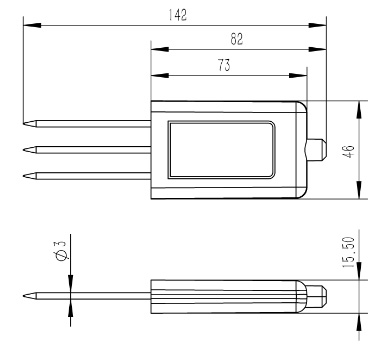Shandong Fengtu IOT Technology Co., Ltd
Sales Manager:Ms. Emily Wang
Cel,Whatsapp,Wechat:+86 15898932201
Email:info@fengtutec.com
Add:No. 155 Optoelectronic Industry Accelerator, Gaoxin District, Weifang, Shandong, China

Sales Manager:Ms. Emily Wang
Cel,Whatsapp,Wechat:+86 15898932201
Email:info@fengtutec.com
Add:No. 155 Optoelectronic Industry Accelerator, Gaoxin District, Weifang, Shandong, China

Model:TY485
Brand:fengtu
1.Soil salinity sensor technical indicators
1.Power supply: DC12V
2.Power consumption: less than 0.1W
3.Working temperature: -30~70℃
4.Communication interface: RS485
5.Working current: 8mA DC12V
6.Minimum data interval: 60S
2.Soil salinity sensor product size chart

3.Precautions for using Soil salinity sensor
1.Sensor installation should be carried out strictly in accordance with the installation and operating instructions.
2.When multiple sensors work at the same time, they must be separated by a distance of more than 5 meters.
3.The sensor measurement principle is limited.There should be no interference from electromagnetic cables and strong magnetic radiation within a 5-meter radius of the sensor measurement location.
Avoid huge errors and damage to sensor measurements.
4.The installation environment of the sensor should comply with the measurement range of the sensor to avoid irregularities such as over-range.
5.The sensor should be installed away from strong acid, alkali, heavy oil and heavy metal environments.
6.The sensor is a soil measurement sensor.It is prohibited to use this sensor for other purposes.
7.The sensor installation environment must not have strong vibration.
8.The sensor cannot be subject to excessive external force.
9.Disassembly is prohibited, and no service will be provided if you disassemble it without permission.
10.The sensor probe is relatively sharp, so you should wear protective gear according to regulations when using it.
11.The equipment should be used and maintained in strict accordance with the above precautions.Our company will not be responsible for any violation of regulations.
4.Soil salinity sensor sensor parameters
| parameter | Measuring range | Accuracy | resolution | unit |
| soil conductivity | 0~20000 | ±3% (15℃, 0~10000us/cm) ±5% (full range) | 1 | us/cm |
| Soil salinity | 0~12800 | ±3% | 1 | mg/L |
Fengtu's Meteorological Observation Equipment can monitor key meteorological elements such as air temperature, humidity, light intensity, and soil moisture in real-time. Equipped with high-precision sensors, it allows flexible setting of data collection intervals. Through wireless transmission t...
With the arrival of the rainy season, natural disasters such as heavy rainstorms and floods occur from time to time, posing a serious threat to people's lives and property. In the game against natural disasters, accurate rainfall monitoring is one of the key links, which can provide important or...
A mobile weather station is a movable meteorological observation device, distinguished by its high portability, simple operation, and ability to monitor multiple meteorological elements simultaneously. In terms of equipment structure, it has built-in high-precision sensors and intelligent chips. Rel...
The deployment and use of greenhouse sensors is a very important and critical part of my country's agricultural production at present. Due to the complex and changeable environmental conditions of the greenhouse, it is necessary to select and arrange reasonably according to different needs in th...